Memories of a Mexican Boy From El Paso: Making It at the University of Texas in the 1960s by Daniel Acosta, Jr. Prologue With apologies for confiscating a part of Norman Podhoretz’s memoir title for my own use, I knew when I started the three-year B. S. pharmacy program at the University of Texas in the fall of 1965 it was make or break for me. I had no close friends in high school and never had a date. I was not entirely a loner in high school; I talked to my classmates and acted friendly. It was not until my junior and senior years that I joined a few school clubs and became more involved with activities I enjoyed, such as the Science Club and the Chess Club. Academically, I did well at Austin High School; I graduated as one of the top seven students in a class of 330 students—four white males, two white females, and me, the lone Mexican American. In 1963, Valedictorian and Salutatorian students were not selected for the first time in El Paso high schools; instead, the top 2% of the class were honored at graduation. I never learned who was number one. Two weeks after graduating from high school, I was on the bus to take me to my freshman classes in English and American History at Texas Western College in the summer of 1963. The so-called “high school on the hill,” which us Mexicans dubbed the College, was our first real chance to experience the college experience. TWC is really a beautiful campus, if you like the desert with colorful cacti and mesquite bushes and limited trees and grass. The small, jagged foothills of the Franklin Mountains near the campus add to its beauty—and thus its nickname. The architecture of the buildings is quite unique with a strong Bhutanese influence—distinctive, red-tiled roofs. Many of the graduating Anglo students went to more glamorous schools away from El Paso. Beginning College For the next two years I caught the early morning Beaumont bus on Piedras Street a block away from my home. The bus went south down Piedras to Five Points, where there was a Sears for shopping and the Pershing Theater. Throughout my early teens I spent many Saturday afternoons watching many B westerns and crime movies. In June 1963, now that I had graduated from high school, I was ready for a better class of movies to see. I remember vividly the first showing in El Paso of Cleopatra with Elizabeth Taylor and Richard Burton at the Pershing. I had read in the El Paso Times that this Hollywood epic was a movie to not be missed—it had Taylor and Burton who were having a torrid love affair during the making of the film. Eddie Fisher, the famous pop singer, divorced Taylor soon after the movie was released. Because their affair was in the news on a nearly daily basis, I knew that I had to see the movie. I got to the Pershing about two hours early to wait in line for a ticket. By the time I arrived there was a long line of people. I saw a group of high school girls who were laughing and waving to their boyfriends to come to the front of the line. “Johnny, did you bring enough money to buy the tickets? Hurry up, we saved some spots for you in line,” yelled one of the girls. As three of the guys pushed and shoved to get to the girls, other people in the line screamed for them to get back to the end of the line. This got the attention of the security guards who rushed to grab the guys and moved them away from the loud and angry people. Eventually things quieted down and people waited patiently to get their tickets. That was my first taste of a so-called mob scene. It was really not that much of a thing; it was only people trying to butt into line. It broke the monotony of standing in line and made me more excited to see the movie. I later learned during my summer school classes, the manager of the Pershing, Mr. Miledi, was a part-time chemistry teacher at the College. Everyone called him “No Bugs My Lady,” a popular ad at the time on radio and TV for an insect spray. I remember seeing him in the fall semester when I was taking freshman chemistry. After leaving Five Points, the bus took a right on Yandell Drive heading west to the plaza in downtown El Paso. In the middle of the plaza was a round, waist-high fountain enclosure, which was dry most of the year. It was a big attraction for kids and tourists because a lonely, foul-smelling alligator was stuck right in the middle of the fountain looking for food to be thrown to him. Of course, there were signs warning people to not feed the alligator, but it was done all the time. I felt sorry for the alligator; I did not look at it while I waited for the Sunset bus which stopped at a medical clinic, a few blocks away from the College. On that bus were many maids and yardmen who worked in the more expensive neighborhoods of west El Paso, near the College. When I come to think of it, my college education really began with my observations of people on the buses I took to and from TWC. Because the Beaumont bus began near William Beaumont Army Medical Center a few miles straight north up Piedras, there were a variety of people who used the bus: people who worked downtown in major department stores, banks, insurance offices, etc., and those people from South El Paso who used the bus to get to work at the Medical Center and at Ft. Bliss—one of the largest Army bases in the country. They were mainly Mexicans who did cleaning and yard work for the Army. Tina, my older sister, became a civil servant, and eventually became the executive manager for the main EEO office at Ft. Bliss. I got to know the bus driver, who always asked how I was doing with my courses. After I graduated from pharmacy school at the University of Texas at Austin three years after leaving TWC, I received a draft notice to return to El Paso for my induction into the US Army at Ft. Bliss. A few weeks into basic training, my platoon had to do some training in the desert, and it so happened that the Army bus was driven by the same driver who took me to classes for those two years at TWC. I could only nod to him because the drill sergeant demanded complete silence in the bus. At least, I knew someone from El Paso during my 8 weeks of training. I had received a graduate deferment to attend the University of Kansas to study for a degree in pharmacology, but the deferment was canceled as the Vietnam War intensified in 1968 and more draftees were needed. Seeing the friendly face of my former bus driver every once and while at Ft. Bliss made my training easier and made it easier to accept my fate if I were to be sent to Vietnam. The country was in turmoil and many student protests were occurring on college campuses. I had thought with my pharmacy degree that I could avoid the Vietnam War and be one of the lucky few to not serve in the military. I was not sent to Vietnam; instead, I served my two years at Army medical facilities in Savannah and South Korea. Several of my Mexican high school classmates were not as lucky as me and were wounded or killed in Vietnam. Minorities across the country were the ones who suffered the most during their service in the military in the 1960s and early 1970s. At Texas Western College Now to the story about my other education to get a degree. After much thought and research about what my major should be, I decided without any advice from my family, teachers, or counselors to pursue a career in pharmacy. That was it; I had made my decision on what I wanted to do; and I developed a plan. To receive a B. S. degree in pharmacy, one did two years of pre-pharmacy coursework at any college, such as chemistry, physics, calculus, English, history, biology, accounting, government, and so on and so on. The final three years for the degree were taken at an accredited college of pharmacy, which in my case was at the University of Texas at Austin after completing my pre-pharmacy courses at Texas Western College in El Paso. The other two colleges of pharmacy in Texas during the 1960s were in Houston. One guess why I chose UT. Even back then Austin was the city to live in Texas. Dallas and Houston did not even come close. After graduation from pharmacy school, I would take the pharmacy board exams, pass them, and become a licensed pharmacist in 1968. Easy—right? The two-year pre-pharmacy curriculum at Texas Western College meshed quite nicely with my plans because the expenses would be minimal to cover, living at home. For some Mexicans like me I felt it was a let-down to not attend a college away from El Paso right after high school; instead, we made fun of the “high school on the hill” and mistakenly thought it was degrading to not go to a “real college.” I was so wrong to think that. Texas Western College was one of the best things to prepare me for the rigors of going to “The University” in Austin, as it is known to native Texans. My family did not have the financial resources to help me much with college expenses, such as tuition, books, bus fare, clothes, lunch expenses, etc. I worked four years through high school as a paper boy and had saved several hundred dollars for my first year of college. I knew that I could not go to a college that was away from El Paso. I realized that if I wanted to attend UT-Austin, it meant working 20 to 25 hours week while I managed a full course load each semester. My next-door neighbor, Mr. Bacon, who I’d known throughout my high school years, got me a job at the Data Analysis Center, which just happened to be across the street from the student union and most of my classrooms. DAC did contract work for the federal government on several defense and scientific projects. I did not know what to expect; most of the guys working there were math, physics, and engineering students. I was a pre-pharmacy major, mostly taking biological and business courses to prepare me for admission into pharmacy school two years later at the University of Texas. As I was going to the water fountain in the main work room at DAC, I heard someone yell out at me: “Hey, Danny. My name for you is now Danny Waters,” Tony winked at me. He told me that he had already seen me get a drink of water twice today and that was now my nickname. I instantly liked him; he was charismatic; and he looked and dressed differently than the rest of us. He wore nice slacks (not jeans) and well-ironed shirts. His haircut was very similar to Cary Grant’s and to the guy who played “Mr. Lucky” on TV. He told me it was a razor-cut, and I could not see a hair out of place. He definitely did not look like a nerdy engineer. Tony was in his senior year, majoring in electrical engineering. It turned out in his junior year he ran for president of the student body, and he won. It was very unusual for a junior to win the presidency and be around when the new president began his term of office. I did not think that Tony really knew what it meant that a Mexican guy had been elected over a white guy. El Paso was definitely a town where whites were more prominent in business and government circles. I never saw Tony use his status with others; we Mexicans at Texas Western College were quite proud of him. My freshman year knowing Tony, when I think back over the years, influenced me greatly. I became prouder of my own Mexican heritage. I was a strong supporter of JFK when he was elected President, and especially, when he appointed the first Mexican American mayor of El Paso, Raymond Telles, the ambassador to Costa Rica. Tony always treated me as an equal and not as a young pimply teenager. When his girlfriend was to start graduate school in geology at the University of Arizona in Tucson, he asked if I could help the both of them move her things to Tucson. I jumped at the offer. Just talking with Tony for that whole trip was so memorable. I was shy and introverted. Intuitively I knew that to be successful socially, professionally, and romantically I had to be more willing to engage with other people and become more extroverted. I began to come out of my shell during my two years of pre-pharmacy coursework at Texas Western College, but without a car and having to take a bus to get to campus every day for those two years I was still at a disadvantage. It became an obsession for me to get a car while I attended college, especially when I would go to Austin for pharmacy school. “Danny, how much have you saved to go to Austin next fall?” asked one of my co-workers at the Data Analysis Center on campus. “I can make it through the first year without working at UT but will have to work full-time in El Paso during the following summer to save more money for the second year.” Actually, my plan was to get one or two jobs in Austin while I was attending pharmacy school for the second year of the professional pharmacy curriculum. I had surprisingly breezed through my first year of classes at UT without having to work like I did in El Paso. I had saved enough money to cover my expenses for my first year at UT. I worked the following summer at a pharmacy in El Paso to build up my savings again. I wanted the extra money from these jobs to buy a car in Austin. Would I be successful? Time and hard work would tell. At the University of Texas I learned about two jobs after my first year at the College of Pharmacy through some hungry and poor pharmacy classmates, who, like me, had to work to get through college. As pharmacy students, it was drilled into our minds by our professors that we were part of the medical profession with physicians and nurses, and we had to show those other two professions that we deserved the same respect they received from the public. A few discount pharmacies were starting to pop up in the 1960s; they were considered to be a negative blot on the more respectable and professional retail pharmacies that had dominated the profession for years. One particular discount pharmacy chain that started in Dallas threw salt in their eyes by opening up their first drug store in Austin. Even its name was insulting and looking for a fight—Ward’s Cut Rate Drugs, which was notably located on Austin’s most famous street, Congress Avenue, looking down the throat at the Capitol a few blocks away. It wanted to hire pharmacy students as employees, and it paid good hourly wages. I applied and got the job. One down, another job to go. I was told about a dormitory for rich girls; the pay was non-existent. Not many students wanted to work there if there were no hourly wages. Instead, a student kitchen worker was paid with meals after the girls ate. If I did not have to buy groceries and cook my own food, this arrangement was right up my alley. I took a kitchen job at the exclusive and pricey Hardin House. I now had my food taken care of each month and I was earning good pay at Ward’s. With these two jobs, I was well on my way in saving money for a car. I did what I always did while I attended UT: go to classes, grab meals when I could, work at two jobs, study, sleep and do it all over again the next day. I had an evening job at the Hardin House and later changed jobs to another girl’s dormitory, starting at 6:30 AM. At both jobs, I closely observed how these co-eds, mainly sorority girls, talked and laughed among themselves as if the kitchen student workers did not exist. At UT, I went to my pharmacy classes in the morning, and in the afternoon, I attended laboratory sections in medicinal chemistry, pharmacology, compounding drugs, pharmacognosy, drug manufacturing, and microbiology. The ultimate senior lab—the Prescription Lab—was a simulated drug store where us pharmacy students learned to read prescriptions, fill the prescriptions, catch any mistakes in the prescriptions, and advise the fake patients/customers on how to take their medications and point out any potential side effects. After classes, I ran back to the dorm to get my free meal before I caught a bus from campus to get to my other job at Ward’s, with its prominent location in downtown Austin. As mentioned earlier, my professors said it was disgraceful and unprofessional to work in a discount pharmacy. Did I really care? I worked there about 15-20 hours a week; I was making good money to get my car. I never thought much about working two jobs. I needed the money to survive so I could live in a city that was the envy of other students living in such cities as College Station—Aggieland; Lubbock—Texas Tech; Waco—Baylor; or my hometown of El Paso—the Miners. I won’t mention the other schools in Houston and Dallas. The problem was that I was not able to enjoy the active night scene my first two years in Austin. Because of my work schedule, my social life in college was not spectacular and if you really want to know, it was sub-par. I did not have a car and that put a real damper on meeting and dating girls. I had a major goal, besides getting my pharmacy degree: get a car and live in style during my last year of pharmacy school. It was the penultimate year that was a bear to endure, but I was getting closer and closer to getting my car. The Hardin House I should talk more about my job at the Hardin House—that exclusive dorm for co-eds that parents paid big bucks to have their daughters fed and protected while they attended the mostly white University of Texas. There were a few Black students at UT in the 1960s. The percentages for Hispanics, mostly of Mexican heritage, were in the low teens. It is now around 23%. I was hired by the head cook, a wonderful Black woman who deeply cared for her student workers and treated us with respect. I looked forward to working each night to hear stories about her life, and she really liked to joke around and laugh with us. However, a few months later a dining room manager was hired to run the entire dining experience at the Hardin House, including the kitchen and the fancy dining room for the girls and their guests. When she was in the kitchen, there was less talking and laughing. I eventually had a run-in with her. Working in the kitchen was sometimes hard and dirty work. The other student workers were at the Hardin House because, like me, we needed the money to attend the great University of Texas, or as stated in the Texas Constitution—a World-Class University! I was the only Mexican student in the kitchen, and the other workers were white and came from small towns in Texas—they did not receive much financial support from their families to make it through college. As a joke, my roommate, Jim, gave me a copy of George Orwell’s Down and Out in London and Paris, with its classic description of what a kitchen “plongeur” did in the bowels of an expensive hotel restaurant in Paris. My kitchen job at the Hardin House did not compare to Orwell’s experiences, but there were several times I was down on my knees cleaning out the grease trap under the sink and removing clogged food from the disposal so it could start working again. Unlike the “plongeurs,” we Hardin House kitchen workers had a fancy dish washer to help us with washing the many dirty pots and pans and dishes. Mopping up the kitchen floors was somewhat enjoyable because we knew that a delicious meal would be waiting for us after our work was done. The head cook prepared marvelous meals for the girls and staff. I can honestly say that the kitchen was relatively clean and hygienic and did not compare to the filth described by Orwell at the hotel restaurant kitchen. When it became very busy at mealtime, I was sometimes asked to serve portions of the meal to the girls. “Good evening, which entrée would you like—the roast beef or the Chicken Parmesan,” I asked with a goofy smile or at least it was a fake smile. One evening, the manager caustically remarked that these girls did not know how good they have it: “Here is one girl who asked for a full dinner plate of food, and she barely touched any of the food. What a waste.” Not realizing it was a rhetorical remark, I replied: “her parents paid good money to have their daughter live at the Hardin House and she can really do anything she wants with the food.” She glared at me and walked away. The manager often stood behind us servers, making sure that equal portions were correctly given to each girl. When all of the girls had been served and had finished their meals, the kitchen crew picked up remaining plates, cleaned the tables, and swept up any food scraps under the chairs and tables. Then we feasted on our meals at a table in the back of the kitchen. I tried secretly to sneak out a second dessert to eat later at my apartment, but I was caught by you-know-who. I was instantly fired on the spot; she got her revenge. My favorite singer, Frank Sinatra, was singing his hit song about the time of my firing: “That’s Life: You’re riding high in April, shot down in May…” After I was fired by the manager, I found another job at another rich girl’s dorm; did you really think that I would now have trouble buying my car? The kitchen student workers were allowed to sit in the main dining room at a table reserved for us lucky dishwashers, bus boys, and servers. We had to be more careful with our conduct in front of all those very attractive co-eds. My ’67 Mustang After two years of working and saving my money, I was nearing the end of my patience with not having a car. I had saved a good sum of money but was still not able to buy a new car outright. I did not want a used car. What made the difference was that I received a full scholarship for my final year of college. It paid to have excellent grades. In the 1960s, to receive the scholarship money the student had to be in good standing and show proof of enrollment. When I showed the foundation that information, I received the check. I could do whatever I wanted with the money—presumably quit my jobs and concentrate on my studies and use the money for tuition and living expenses. Instead, I used the scholarship funds with my savings to purchase outright a cool, sky blue 1967 Mustang, four on the floor—a classic if I had kept it! There was no need for monthly car payments, but I had to continue to work my two jobs to pay my living expenses, which now included gas and car insurance. I filled up the car at Shamrock’s, which gave free glasses for a full tank. I bought the car in the summer before I went back to work at the Hardin House in the fall. I was now ready to party. However, before I could start driving, Jim had to drive the car off the dealership lot because I did not have a license and did not know how to drive a manual. After a monthly ordeal of Jim teaching me how to drive, I took my driving test at the Texas Department of Safety on Lamar Avenue a couple of miles from campus. I passed on my first try. Jim and I were casual friends in high school, and because both of us were in pre-pharmacy at Texas Western College, we decided to room together in Austin to cut down on our living expenses. Unlike me, he dated a girl before I had my first date, and they soon fell in love and wanted to get married that summer. Minnie had a family in San Benito (in the South Texas Valley) and went home to tell her parents about her upcoming marriage. A few days later, Minnie asked if Jim could help her with her possessions she had at home. I was recruited to be the chauffeur and eventually the best man at their justice of the peace wedding back in Austin. The drive was about 6oo miles round trip, via US 77 S. It was my first road trip, and the Mustang performed brilliantly, all done in one day. My First Real Date Lest I forget, let me tell you about one more episode I had at the Hardin House before I was fired. Mrs. Stella Hardin allowed only sophomores and juniors to reside in her house. The parents knew that she treated their daughters as if they were her own children, and she had strict rules on their behavior while they lived in her house. A Hardin brochure stated very clearly her rules: This is my house with my rules; if you are to live here, you are to follow my rules. Mrs. Hardin was a gracious woman, a refined Southern lady. I would see her one last time near my graduation date. This last incident involved the breaking of one of Mrs. Hardin’s cardinal rules about no dating of kitchen student workers. One evening, I was able to catch the eye of a cute sophomore as she waited in the serving line to get her meal. One thing led to another, and we exchanged names. She was a much younger sophomore than the other girls, having just turned 18. Starting my fourth year of college I was the proverbial older man—I was 21. Perhaps it was due to my age and my Latin good looks (?) that she finally accepted a date with me. I think she accepted my date offer because every time I called to ask her for a date, her roommates answered the phone and made it clear that she was not in and to stop calling. She was nice to me when I saw her in the serving line, and she finally agreed to talk on the phone when I gave her my phone number. I believe her roommates dared her to go out with that unknown Mexican guy who worked in the kitchen. We agreed I would not go into the lobby of the Hardin House and ask for her to come down from her room. She suggested that we meet me outside at a specified time as if she were going alone to the library. The date was no big thing. We went to a movie at the Varsity Theater on the main drag across the street from the Texas Union. It was the Audrey Hepburn movie, Wait Until Dark, about a blind girl and drug dealers. The only time we really touched was when she jumped out of her seat and grabbed me during the classic scene when the dealers had no lights to find Hepburn in the darkness of her apartment until they opened the refrigerator door, and the room turned all bright. The whole audience screamed. We left the movie laughing and talking, and she complimented me on my new Mustang. She was waiting all evening to show me one last thing. When we arrived at the Hardin House, I walked around the car to open the door. She got out and unloosened the strap on the trench coat that she never took off during the movie and quickly flashed me that she was only wearing a shortie nightgown. She grabbed me and abruptly gave me a brief French kiss, daringly darting her tongue into my mouth for a nanosecond, and then ran to the front door. I never saw her again because it was close to finals, and I was fired shortly thereafter. I guess she won the dare with her roommates to go out with a Mexican. For some of those girls at the Hardin House, but not my particular date, I am reminded of a Beatles’ song. “Baby You’re a Rich Man: How does it feel to be one of the beautiful people?” Marking Time: My Final Year Now that I had my Mustang, I was able to have more dates after my first encounter with the Hardin girl. Actually, the first time I took out a girl in my Mustang was within a few weeks of buying the car. It was with a girl I had met at Ward’s when she came in as a customer. I would not call it an actual date because when I asked her out after work for burgers at McDonald’s, she brought her younger brother without telling me; he was in his teens and had a developmental disability. Unwisely, I let her drive my Mustang up I-35 to Round Rock and then back to Austin. We were lucky that we were not caught for speeding. Later that same night we returned to my apartment complex, which had a swimming pool; not having any swim trunks we jumped into the pool with our jeans on and sat there talking for a couple of hours. After that episode, I knew that I had to be more careful in the selection of my dates. There were a few girls who worked in the cosmetics section at the drugstore, but they had no interest in college. I had a few dates with a couple of them but there was nothing in common that kept our interest to see each other again. There were some female pharmacy students that I was able to know better, but I found out that having dates with two of them created too much gossip to endure and that ended my attempts at romance with fellow classmates. I did not try to get dates with any of those co-eds at my second job. They were older than the Hardin girls, and to be truthful I was somewhat intimidated by their snobbery and arrogance. I know what you are thinking—what about my studies? I would be lying if I said that it did not have an effect on my studies. My going out during the summer and fall semesters of my last year in pharmacy school did reduce my studying time, and for the first time I had to struggle to eke out two B’s and two A’s, after a near perfect two years of A’s in my earlier classes. UT professors posted exam grades on their office doors so everyone could see what you did on a test and what your final grade in the course was. I remember a female student, not a pharmacy student but who was in two of my science classes, asked me just out of the blue why I did not do better on one of my tests. I did not make the highest grade in my physiology class on that one exam. We really had never talked much out of class. But I aced the final exam with a 98. She did not say anything to me then. Not to stereotype people, she was a pleasant, good-looking sorority white girl who I remember dressed very preppy with cute short skirts, stockings, and expensive loafers. I did not wear my Mexican heritage on my sleeves while I was at UT, but anyone born in Texas recognizes who is Mexican and who is not. I am sure that she knew I was a Mexican. In my final semester, I made all A’s in some of the more difficult courses in the curriculum. That made up for that fall semester. I graduated first in my class. Relaxing After putting in a full day and night working and studying, my idea of relaxing and having fun was to listen to two Austin radio stations, KNOW-AM and KAZZ-FM, in the late evenings. KNOW played top 40 songs and KAZZ was the progressive station covering folk, jazz, and blues. I went to sleep listening to these stations. Most Saturday evenings after working at Ward’s, I returned to my garage apartment around 10:30 PM. A fraternity house was near my apartment, and I often heard a rock band playing and frat boys yelling and screaming during one of their Saturday parties after a Texas football game. One night a local band was particularly good, singing Van Morrison’s hit song: “And her name is G… L…O…R…I… A and I’m gonna shout it all night.” It turned out to be a blast of a party with the band singing the lyrics of “Gloria” over and over for about 10 minutes straight. I was tempted to sneak over to the frat house to see the wild orgy scene. But I had to work at Ward’s that weekend, both Saturday and Sunday, and I needed some sleep. A myth spread throughout the Texas fraternity community that the song was sung for more than 45 minutes. As I was drifting to sleep, I heard these lyrics reverberate in my mind throughout the night: “By the time I get to Phoenix she’ll be rising.” I wished that I had had a girlfriend to think about. Closer to the End Late one evening I was listening to a Paul Simon song on the radio. I know what you are thinking, and it was not that song. It was from the album of the movie, The Graduate, Mrs. Robinson. It was my final semester of pharmacy school in 1968. I had seen the movie, and it made me realize I was about to begin my real life after completing my degree at the University of Texas. There was an obnoxious guy sitting behind me at the theater who made wisecracks throughout the movie about how dumb the main character, played by Dustin Hoffman, was, and it sort of ruined the movie for me because I later learned that the asshole was a pharmacy student in one of my classes. For my final two semesters, I got up around 5:45 AM and made it to work by 6:30. KNOW AM played the Top 40 hits and it seemed to play the same hit in the morning when I was driving to work. A particular song that I heard for the last several weeks before I graduated was the one by Dionne Warwick—”Do You Know the Way to San José?” It really got to me because I was getting antsy on where I would live and whether I would work as a pharmacist or go to graduate school to earn a doctorate in pharmacology and toxicology? The Vietnam War was really heating up in 1968. My decision was made for me when the government offered draft deferments for admission into graduate school. I took the GRE, applied for fellowship support, and filled out several applications to four or five universities. Then I waited. For the last several months of the spring semester, I was content to wait it out because several of my professors had written excellent letters of reference for me and told me that I would be accepted into graduate school without any problems. However, the year 1968 was a very traumatic time in American history: the assassinations of MLK and RFK occurred; there were major race riots in several large cities; there was the resignation of LBJ because of the Vietnam War; there was the rise of the Chicano Movement; and there were massive protests at the Democratic Convention in Chicago to decide who ran in place of LBJ against Richard Nixon. I began to realize how much power and influence the Democratic Party had lost in Texas by observing those rich co-eds’ reactions to the deaths of MLK and RFK. Early in June after RFK had won the California Democratic primary over Gene McCarthy, the news of his death was being shown on TV in the lounge of the girls’ dorm I was working at. It was next to the dining hall as I walked to a table with my tray of food. I heard loud screams, laughing, and clapping by the girls at the announcement of his death. I was so glad that I was leaving UT, Austin, and Texas right after my graduation. My Future Is Decided A month before graduation, I learned that I had received a prestigious, nationally competitive fellowship from the National Science Foundation, which allowed me to use the fellowship funds to attend a university of my choosing. I soon realized that this award was something big because several of my professors were trying to persuade me to stay at Texas for my graduate work. I chose the University of Kansas on the recommendation of my favorite professor, Dr. Delgado, the only Mexican American on the faculty. I would leave Texas later in June right after I had taken my board exams in pharmacy. A few weeks before graduation, I was working a Saturday shift at Ward’s, which on that particular day there was a sale on many OTC drugs and several cosmetic products. I was working one of the registers and out of my right eye I saw Mrs. Hardin at the next register. I tried not to look at her. I thought to myself that even the rich like to buy things that save them money, even if it’s at a discount pharmacy. The interior of Ward’s was not that fancy, and all types and classes of people came into the store. The prices of each product were placed on the shelf with a piece of masking tape right below the product. This meant I had to memorize the prices of the products because there were no price stickers on the items. Anything to save money and time for Ward’s. “Young man, how are you doing with your classes?” Mrs. Hardin pleasantly smiled at me. “Quite well. I will graduate soon with a degree in pharmacy and plan to go to graduate school in Kansas.” I had only seen Mrs. Hardin in the kitchen a couple of times and never thought she’d recognize me a year later. She looked straight into my eyes and said: “Good for you and best of luck in your new studies.” I was at loss for words and simply replied, “Thank you”! She walked out of the store with her toiletries and drugs and that was the last time I saw her. Epilogue My parents, my older sister’s family with her husband and three kids, and my unmarried younger sister came to Austin to celebrate my graduation and send me off to attend graduate school at the University of Kansas. After the College of Pharmacy graduation ceremony, where I received several pharmacy textbooks for graduating at the top of my class—Summa cum Laude, I took my family back to my apartment to eat. My new roommate, Nick, and I went to Kentucky Fried Chicken and got several family meals. We ate, talked, and laughed. We also planned to attend HemisFair ’68 in San Antonio the next day after graduation. I had set up my family in a small family-run motel near campus on Guadalupe Street, the so-called “Drag.” It was not fancy, but it was inexpensive and easy to get on I-35 to go to the World’s Fair. I was to pick up my parents in my Mustang. Early Sunday morning the next day, I arrived at the motel and my father was wearing a sleeveless T-shirt getting some fresh air in the gravel-dirt parking lot outside his motel room. It was going to be a hot June day in Texas. A truck suddenly did a U-turn in the near empty street and came to a screeching halt in front of the driveway to the motel. The driver yelled from his truck: “Are you looking for work—you can make an easy $25 for a small project at a building site!” The white builder thought this Mexican man would jump to work for him that morning. My father laughed off the offer and told the man he was visiting his son in Austin. I turned my back on the man and angrily said to myself—this is Texas. The next day I said good-bye to my family and took off for Houston to take my board exams. My next stop was Kansas to begin graduate school. But that part of my life was interrupted by the cancellation of my graduate deferment, and I had to serve a two-year stint in the US Army. And then I started my PhD work in 1970 at the University of Kansas. 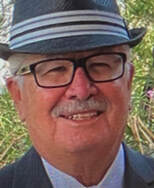 Dan Acosta is a Mexican American born and raised in El Paso. His grandparents emigrated to the US in the early 1900s. His career spanned 45 years as an educator, scientist, and administrator in academia and the federal government. He recently retired at age 74 in 2019 in Austin and plans to write about his experiences with discrimination and bias during his life and career. He received a B.S. degree in Pharmacy at UT-Austin and a Ph.D. in Pharmacology at the University of Kansas. He has had a few of his stories published in the Sky Island Journal, The Rush, Somos en Escrito, and The Acentos Review.
3 Comments
Tertullian's CornerA Book review of Liberalism and Its Discontents, by Francis FukuyamaBy Rosa Martha Villarreal There wasn’t a more opportune time for the publication of Francis Fukuyama’s book Liberalism and Its Discontents (Farrar, Straus and Giroux 2022) than now with the January 6th Congressional Committee hearings. The events of January 6th, reminded us that our constitutionally based system is not immune to the machination of those who wish to usurp the liberal order, which has been in place since the United States ratified the Constitution in 1788. Today, illiberal partisans speciously claim that they are actually defending the Constitution, but Fukuyama forcefully refutes those claims. In this book, Francis Fukuyama does not detail the historical rise of Liberalism. As he states, there literally thousands of books which do just that. Rather he focuses on the justifications of an institutional-based liberalism, a system of governance in which the body politic gives it consent to be governed by a strong state restrained by laws because, as Thomas Hobbes posits, the unifying human passion is not religious belief but fear of violent death. Before he delves into the justifications for liberalism, Fukuyama begins his book with an important caveat: "By 'liberalism,' I refer to the doctrine that first emerged in the second half of the seventeenth century that argued for the limitation of the powers of governments through law and ultimately constitutions, creating institutions protecting the rights of individuals living under their jurisdiction. I do not refer to liberalism as it is used today in the United States as a label for left -of-center politics; that set of ideas, as we shall see, has diverted from classical liberalism in certain critical ways." (vii) [ Italics mine] Fukuyama states that the justifications of a liberal society are that liberalism:
Fukuyama explains that there is an inevitable the tension between the idealism of classical liberalism and its actual practice. In the last 30 years this tension has been exacerbated by the economic inequalities wrought by Neoliberalism. First of all, economic inequality is not new as economic liberalism has always been predicated strong property rights. Property rights were central to the historical rise of liberalism since the philosophy’s creators and early practitioners were property-owning, middle-class individuals, the bourgeoise. And here lies an inevitable tension since, as Madison posits in The Federalist No. 10, this leads to a rise of social classes and a source of inequity, which subsequently caused the rise of Marxism. Recently, this on-going tension has been exacerbated by Neoliberalism. Neoliberalism, the economic school of thought led by Milton Friedman, Friedrich Hayek, et al, also called the University of Chicago or Austrian School of Thought, reasoned that deregulation, privatization, free trade, and higher immigration would maximize economic growth by allowing a free exchange of good, service, and workers. These changes would result in more competition which in turn would lower consumer prices. The free flow of labor would also contribute to lower priced consumer goods. Neoliberal policies, as Friedman et al predicted, brought a boon of innovation and creativity. These neoliberal policies represented the positions of not only conservative leaders like Ronald Reagan and Margaret Thatcher but left-center leaders like Bill Clinton and Tony Blair. But as Fukuyama points out, Neoliberalism’s shortcomings have had devastating, unintended consequences. First, the theory is predicated on consumerism, and yes, goods became cheaper and the economy was more efficient. However, jobs were outsourced and wages stagnated. Deregulation of capital controls, which had been instituted in the 1930s, precipitated the financial crisis of 2008. There were also global political consequence in places like Russia after the fall of the Soviet Union where the economic system went from central planning to none, precipitating the rise of corrupt oligarchs and Vladimir Putin’s dictatorship. In sum, although less regulated Capitalism did create enormous wealth, it did not create a healthy society for everyone. "They [neoliberals] failed to understand that markets themselves function only when there they are strictly regulated by states with functioning legal systems that have the capacity to enforce rules concerning transparency, contracts, ownership, and the like." (23) Additionally, good paying jobs for low skill workers were outsourced and job retraining programs failed to materialize. "Many neoliberals supported open immigration, again on the grounds that allowing labor to move to the point of greater demand would lead to greater efficiency They were again correct in thinking that labor mobility would improve aggregate welfare, but paid less attention to its distributional consequences and the social backlash it would inspire." (25) Besides intensification of anti-immigration vitriol, another consequent is the justifiable resentment against the gross disparities in income distribution. Fukuyama asserts that the average workers hurt by these policies do not find solace that workers in other countries or immigrants are better off at their expense. And I may add, I doubt they find it celebratory every time billionaires in over-sized, buffoonish cowboy hats take a ride into outer space. Fukuyama attributes the flaws of neoliberalism to oversimplification, a religious-like ideological fervor, and a misreading of human nature. On their own, capitalists will horde wealth because capitalists are humans and greed is part of human nature, which is why regulations are needed. Capitalism has overall elevated the wealth of many societies. But even when capitalism can benefit a large number of people, the beneficiaries react emotionally. They value cultural signifiers over affordability, best characterized by not wanting a Starbucks to replace a familiar café; they act in their self-interest; and desire the dignity of work. The backlash against immigrants, the rise of populism, and dangerously, the desire to “return” to an imagined idealized past threatens the very core of our social contract, the social order, the right to human dignity and self-determination as the disenchanted ones are willing to resort to violence. Adding to the discontent wrought by neoliberalism is the rise of illiberal ideologies on both the Right and the Progressive Left. This is abetted by technology and the flow of unvetted claims, conspiracy theories, and outright fake news. The distrust of empiricism, disdain of facts, and “motivated reasoning,” i.e., finding selective data to support an a priori doctrine, produces a limitless source of charlatans, grifters, and opportunistic politicians. On the Left, what started as a noble quest for equality for all in the social compact such as the sexual contract, correcting “the most rapacious forms of capitalism” (74) and the debunking of the assumed cultural superiority of Western culture, devolved into an obsession with group identity and irrational policing of speech. While Right-wing politicians demagogue the threat of Marxist Critical Theory or simply Critical Theory, it remains an exercise in the domain of academic political, sociological, and literary criticism. In other words, Critical Theory and Post Structuralism are intellectual exercises and not a mechanism of governance. It is true that Critical Theory is fixated with perpetual victimhood, historical power relationships, and stubborn focus on past wrongs, but it is not a danger to the social order because it does not advocate the imposition of a totalitarian system of governance. If anything, says Fukuyama, Progressive Leftism leans more towards anarchy. Thus, the Leftist program can be annoying if not downright silly, but it is not a threat to the liberal social order. The existential threat to the civil order and the individual’s right to self-autonomy comes from the Right, says Fukuyama. Although the Right appropriated the Far Left’s disdain of facts and fixation with (in their case, white) identity politics, they never intended to defend the liberal order but preserve their own power in a zero-sum game where the triumphalist narrative of White American Exceptionalism remained dominant even at the expense of depriving some citizens of their full rights. However, if there ever was a constant, said Heraclitus of Ephesus, it is change. Modernity and liberalism disrupted the traditional ideas of “religiously based morality” and especially its regulations of sexual behavior. Fukuyama correctly states that the antipathy to change is not a particularly a Christian phenomenon but applies most of the major faiths around the world. Traditional nationalism, too, has diminished as more and more educated people identify with like-minded people around the world. This cosmopolitanism is disdained by the American Right as un-American. "In some corners of the American Right, unwillingness to tolerate diversity extends not only to fellow citizens of the wrong race, ethnicity, or religion, but to broad groups of people who actually constitute a majority of the population." (118) Here Fukuyama quotes Glenn Elmers of the Claremont Institute that even liberally inclined white Americans are not considered real Americans by the Right but rather “citizen aliens” (118). The Right is dangerously willing to use state power and violence to impose their ideological vision of a 19th century America and coerce others into their definition of Americanism. They fail to see that the changes they are so threatened by are manifestations of the political evolution that sought to fulfill the promise of liberalism, which is freedom and equality for all as the Pledge of Allegiance says. In his last two chapters, “National Identity” and “Principles for a Liberal Society,” Fukuyama refutes the criticisms of liberalism from the Left and the Right. "Progressives for their part will have to accept the fact that roughly half the country does not agree with either their goals or their methods, and they are unlikely to simply overpower them at the ballot box anytime soon. Conservatives need to come to terms with the country’s shifting racial and ethnic mix, the fact that women will continue to occupy the fullest range of positions, both professionally and privately, and that gender roles have changed profoundly. Both sides quietly entertain hopes that a large majority of their fellow citizens secretly agree with them and are prevented from expressing this agreement only through media manipulation and false consciousness propagated by various elites. This is a dangerous dodge that simply allows partisans to simply wish diversity away. Classical liberalism is needed more than ever today, because the United States (as well as other liberal democracies) are more diverse than they ever were." (146) Finally, Fukuyama argues that there are no other just governing alternatives to liberalism; that its perceived weaknesses—its institutions of checks and balances that slow the implementation of new legislation, its deconstruction of the old binds of traditionalism and religion, its impersonality--are its strengths. A liberal society creates order while simultaneously protecting its citizen from external threats by “creating a powerful state, but then constraining that power under the rule of law” (130). More than ever, the principles of liberalism need to be affirmed and strengthened. This takes hard work--freedom isn’t free. We must take certain steps to safeguard liberalism and here is why. First, there is a need for government because it provides critical public services. The size of government is not the critical issue but the its quality and its impersonality, i.e., it must treat citizens as equals. This government, moreover, must be manned by well-educated professionals. Second, a quality government must regulate the economy but not hinder its growth engine and creative incentives in the process. But there must be a degree of regulation and income redistribution to protect against political backlash and unrest. Additionally, to secure the domestic peace, the government and liberal institutions must guard against “state rights” that seek to alienate citizens from their rights by hindering their access to the ballot box, gerrymandering, and, now, forcing women to give birth. Third, free speech needs to be defended because free thought is implicit with speech. However, there are limits because of norms and empirical facts. Furthermore, free speech originates with the right to privacy. There is no “right way to think,” contrary to what the Right and the Progressive Left posit. Finally, the rights of the individual take primacy over the cultural rights of groups because individualism is a universal value and not a construct of Western culture. Rather individualism is a by-product of socio-economic modernity, be it in Western Europe or South Korea. Although we members of groups based on heritage, ancestry and such, we have individual agency, and individual agency takes precedence over the group. Fukuyama closes his book with the admonishment for the political leadership and its individual citizens to distance themselves from extremism. As the ancient Greeks said: “nothing in excess” (154). "Moderation implies and requires self-restraint, the deliberate effort not to seek the greatest emotion of the fullest accomplishment. Moderation is seen as an artificial restraint on the inner self, whose full expression is said to be the source of human happiness and achievement." (154) This book is a timely reminder of principles of the nation and why those principles are under attack and must be defended. Fukuyama reminds his readers that the nation was founded on the philosophy of classical liberalism not a specious White nationalist narrative as espoused by the Right nor the victimhood narrative of the Left. It’s accessible writing and straight-forward argumentative style make for a quick but dense, thought-provoking reading and one that every citizen should read. 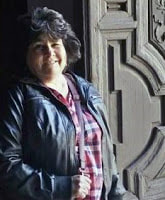 Rosa Martha Villarreal, recently retired as an Adjunct Professor at Cosumnes River College in Sacramento, California, is author of several important novels including Doctor Magdalena, The Stillness of Love and Exile, and Chronicles of Air and Dreams. The name for her column, Tertullian’s Corner, comes, she says, from the time when liberal, i.e., free thinking, people were persecuted by the Catholic Church. So young men (and women) would gather in some corner of a monastery under the pretense of discussing the Church Father, Tertullian. Thus, the tertulia was born. A una anciana Venga, madre— su rebozo arrastra telaraña negra y sus enaguas le enredan los tobillos; apoya el peso de sus años en trémulo bastón y sus manos temblorosas empujan sobre el mostrador centavos sudados. ¿Aún todavía ve, viejecita, la jara de su aguja arrastrando colores? Las flores que borda con hilazas de a tres-por-diez no se marchitan tan pronto como las hojas del tiempo. ¿Qué cosas recuerda? Su boca parece constantemente saborear los restos de años rellenos de miel. ¿Dónde están los hijos que parió? ¿Hablan ahora solamente inglés y dicen que son hispanos? Sé que un día no vendrá a pedirme que le que escoja los matices que ya no puede ver. Sé que esperaré en vano su bendición desdentada. Miraré hacia la calle polvorienta refrescada por alas de paloma hasta que un chiquillo mugroso me jale de la manga y me pregunte: — Señor, jau mach is dis? -- To an Old Woman Come, mother— your rebozo trails a black web and your hem catches on your heels, you lean the burden of your years on shaky cane, and palsied hand pushes sweat-grimed pennies on the counter. Can you still see, old woman, the darting color-trailed needle of your trade? The flowers you embroider with three-for-a-dime threads cannot fade as quickly as the leaves of time. What things do you remember? Your mouth seems to be forever tasting the residue of nectar hearted years. Where are the sons you bore? Do they speak only English now and say they’re Spanish? One day I know you will not come and ask for me to pick the colors you can no longer see. I know I’ll wait in vain for your toothless benediction. I’ll look into the dusty street made cool by pigeons’ wings until a dirty kid will nudge me and say: “Señor, how mach ees thees?” — RAFAEL JESÚS GONZÁLEZ © 2022 BY RAFAEL JESÚS GONZÁLEZ Riffs sobre el poema |
Archives
June 2024
Categories
All
|
Donate and Make Literature Happen
is published by the Somos En Escrito Literary Foundation,
a 501 (c) (3) non-profit, tax-exempt corporation. EIN 81-3162209

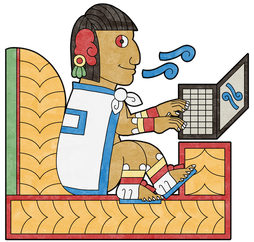
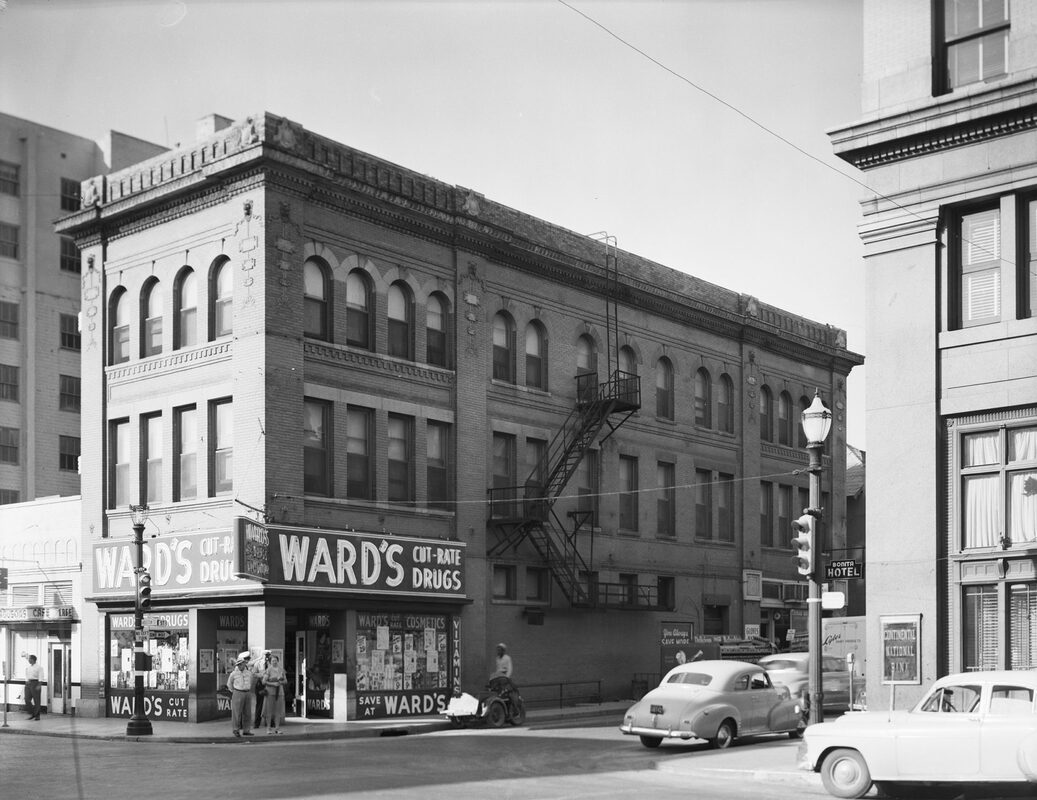
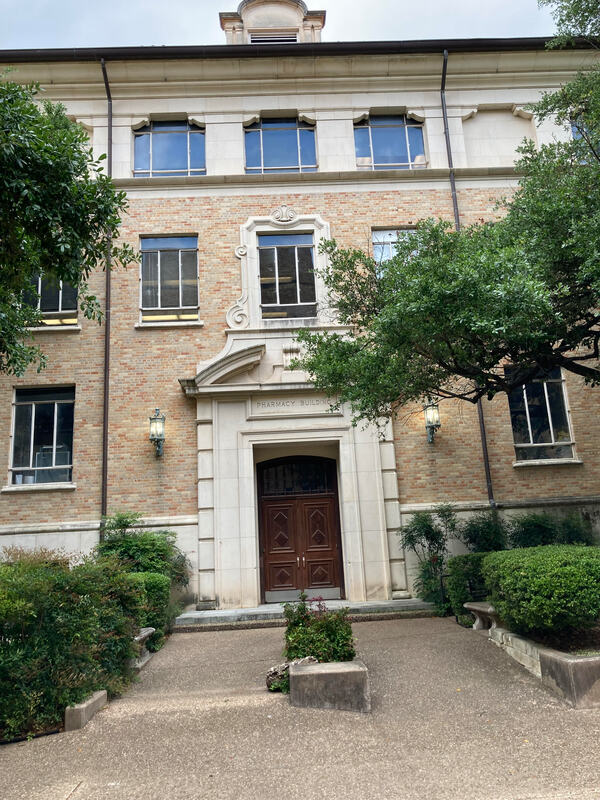
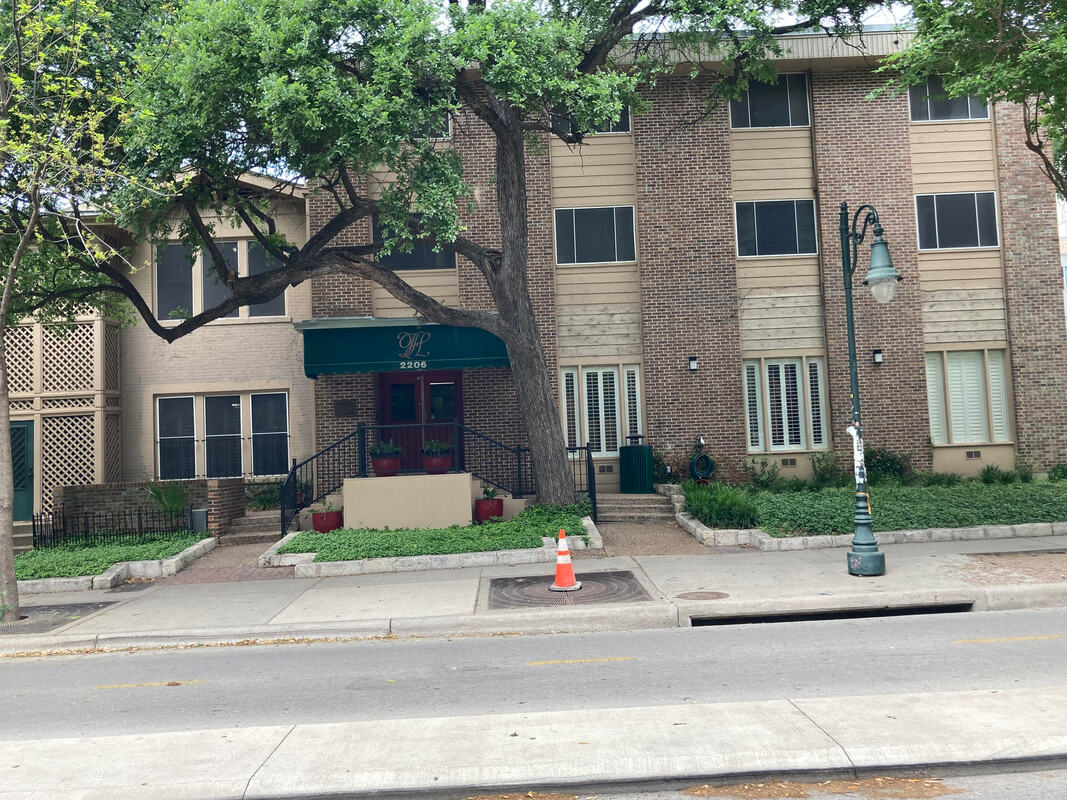
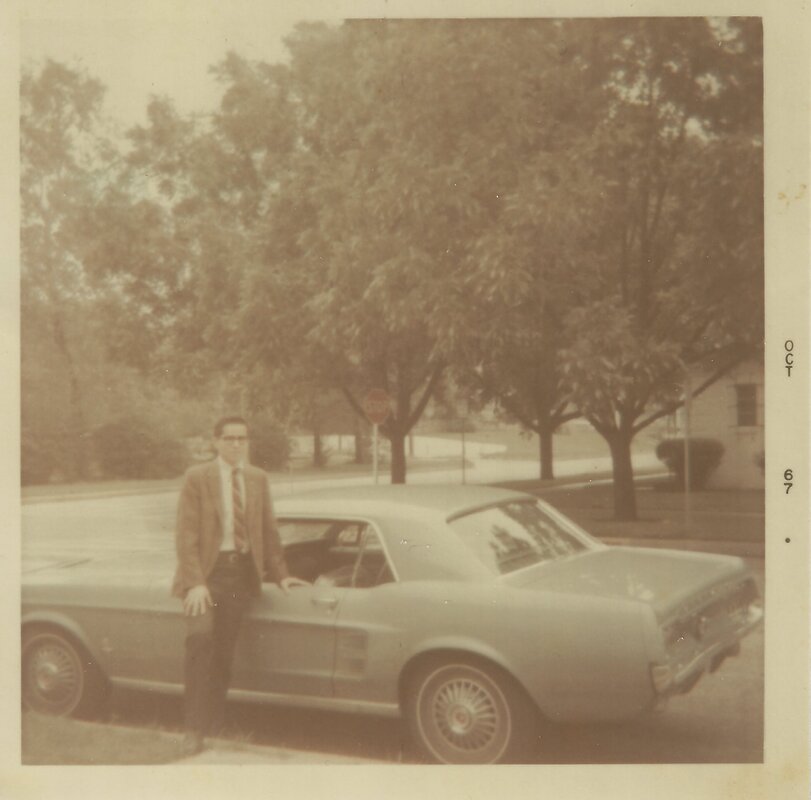
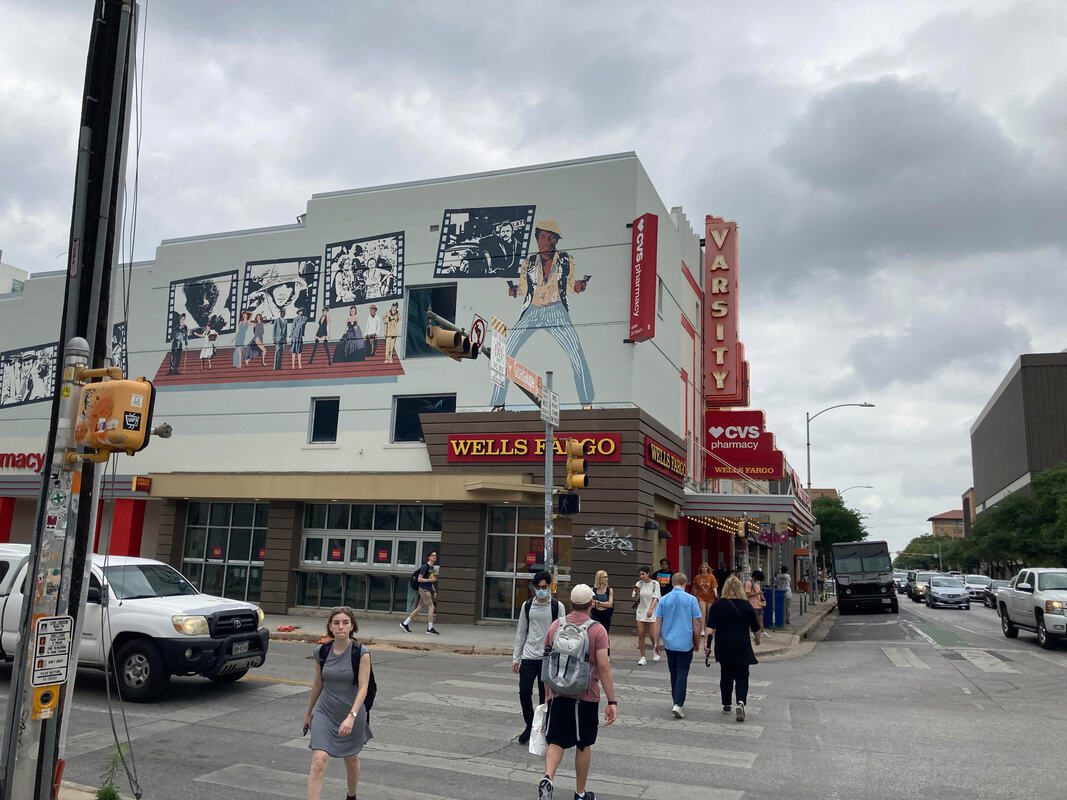
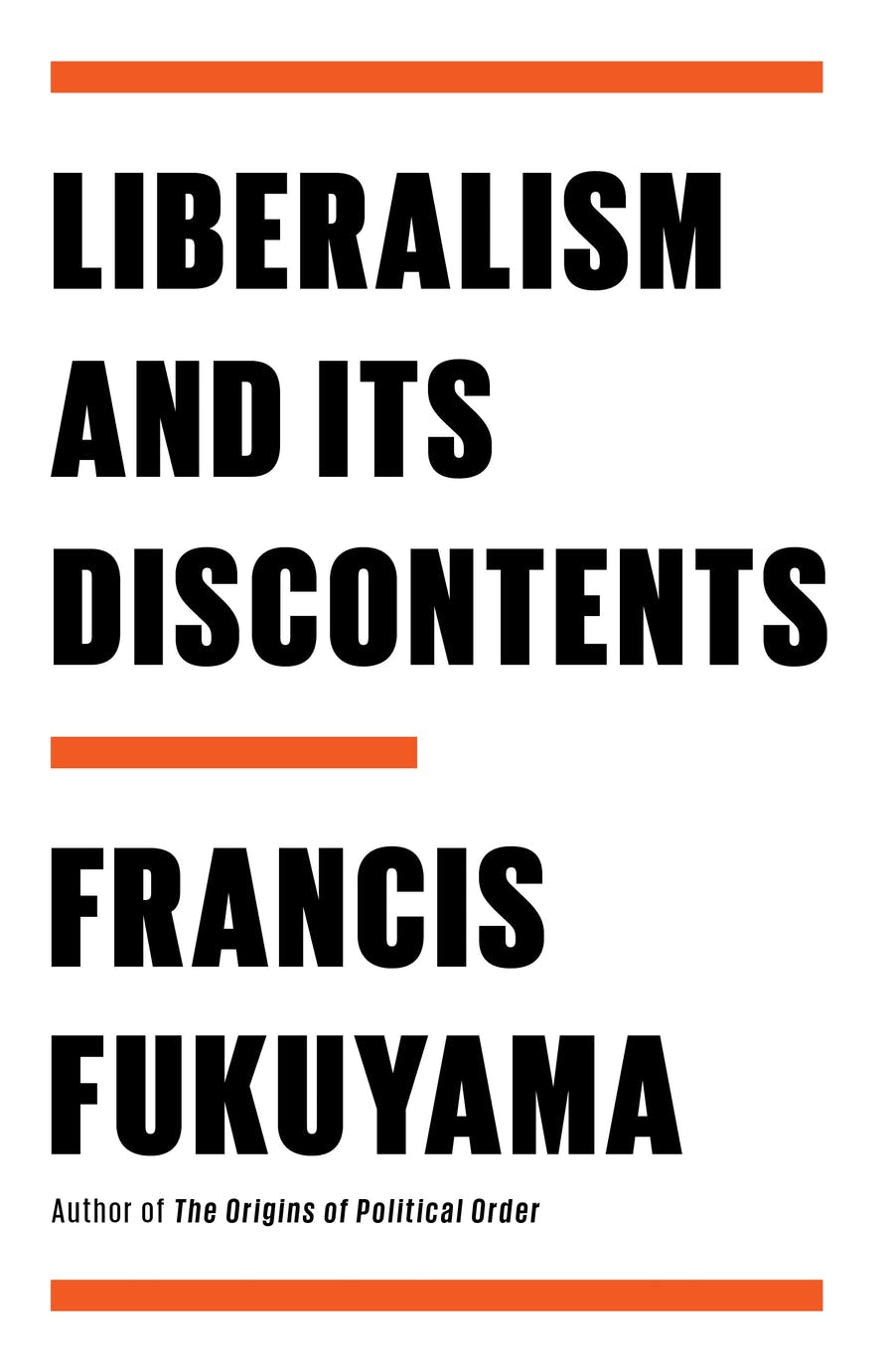
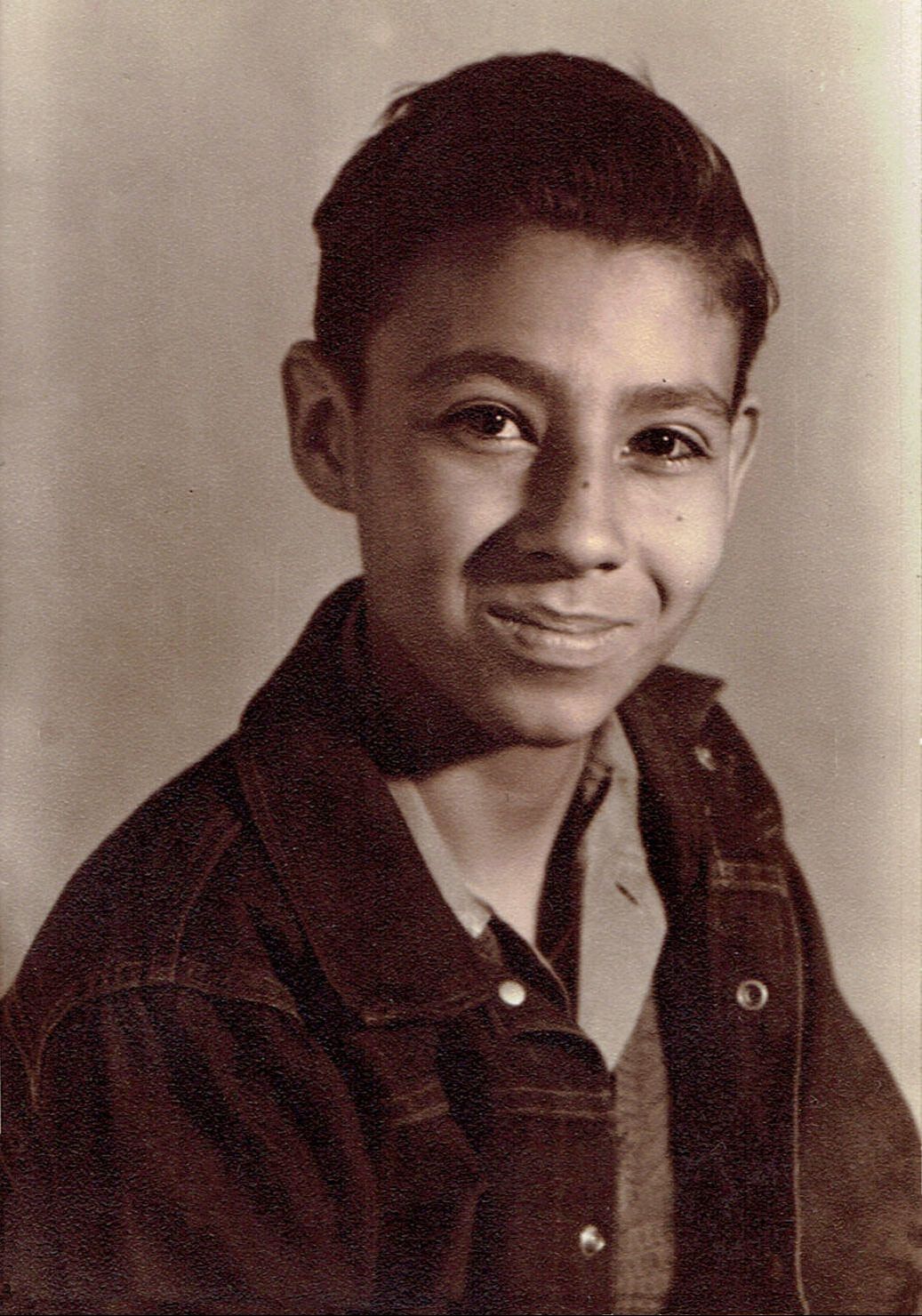
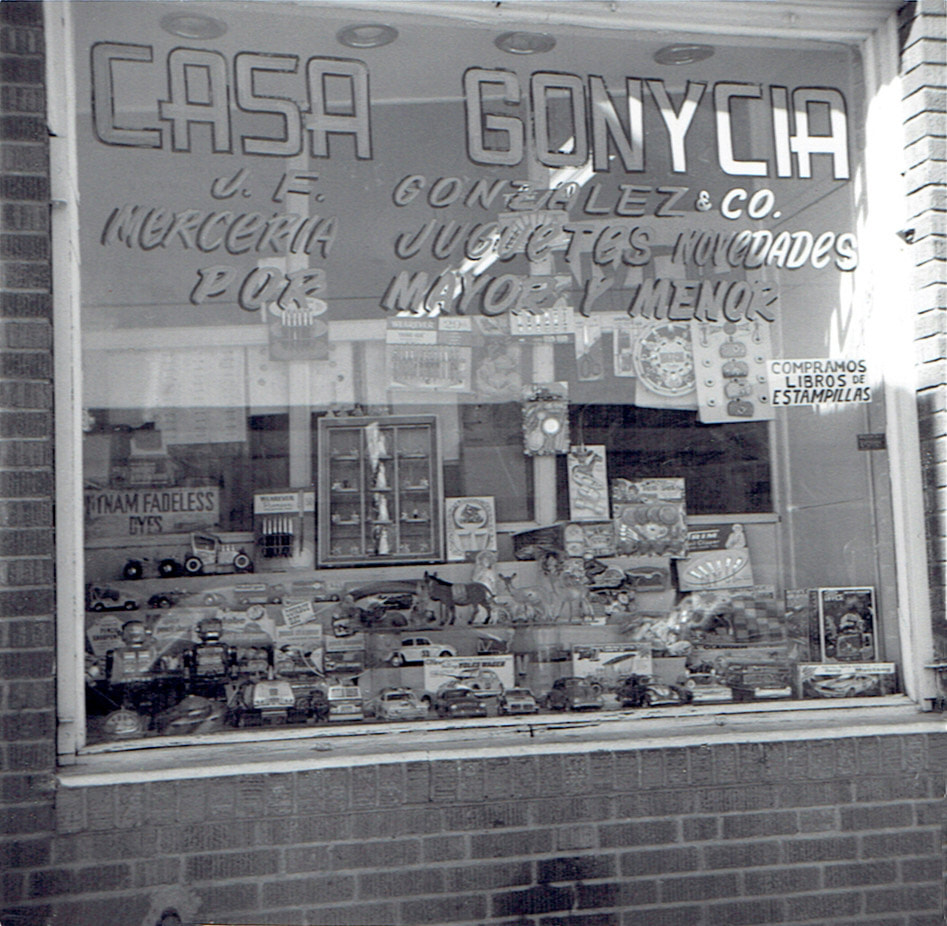
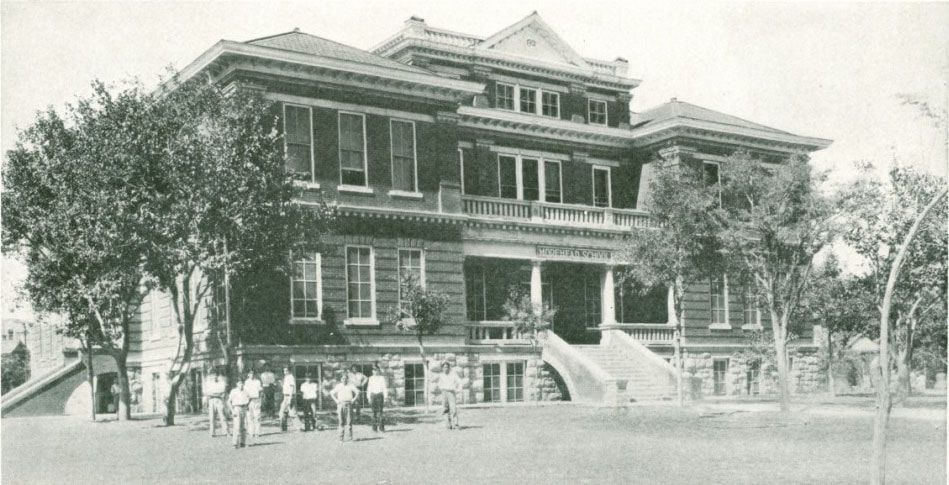
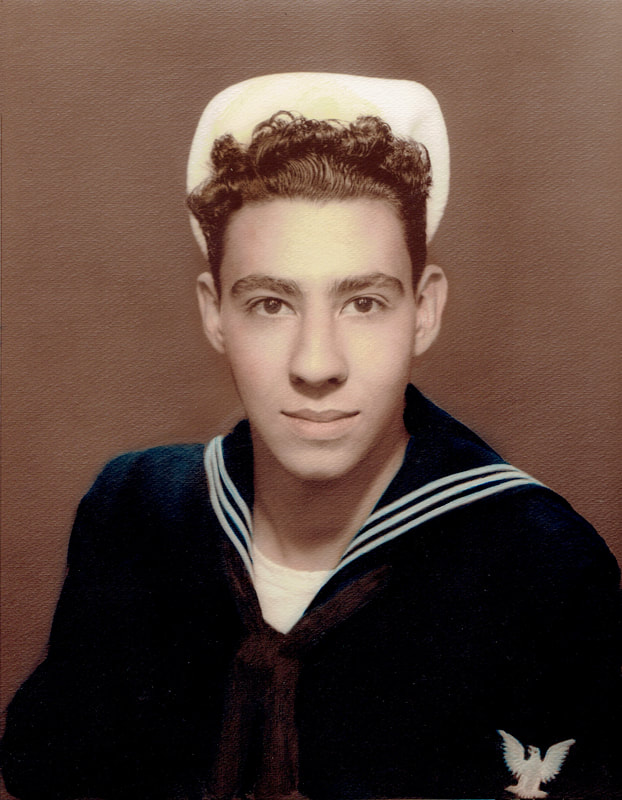
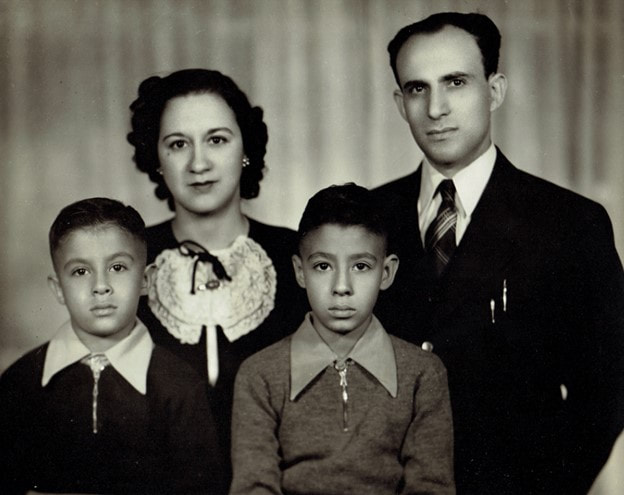
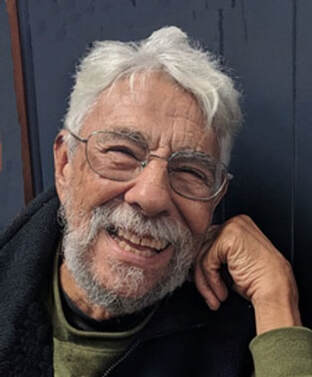

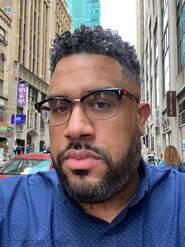
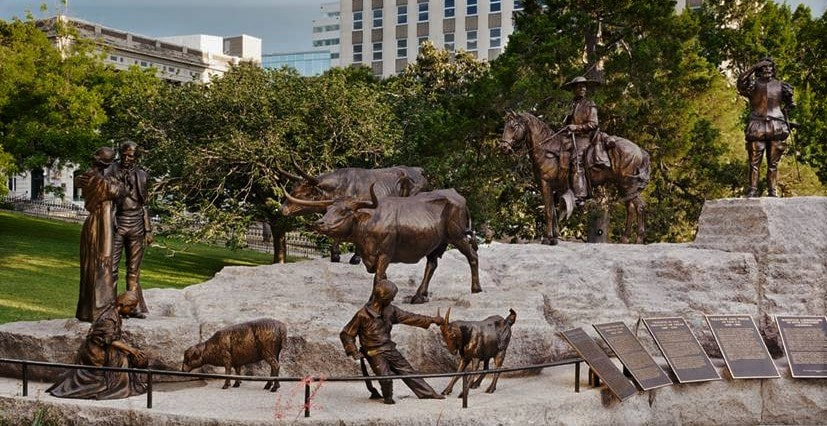
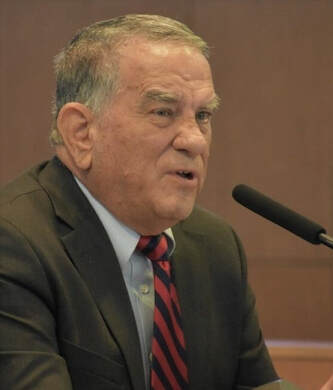
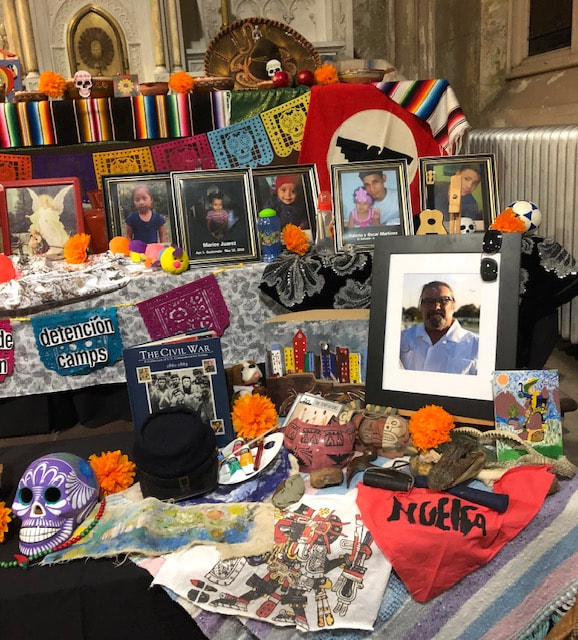
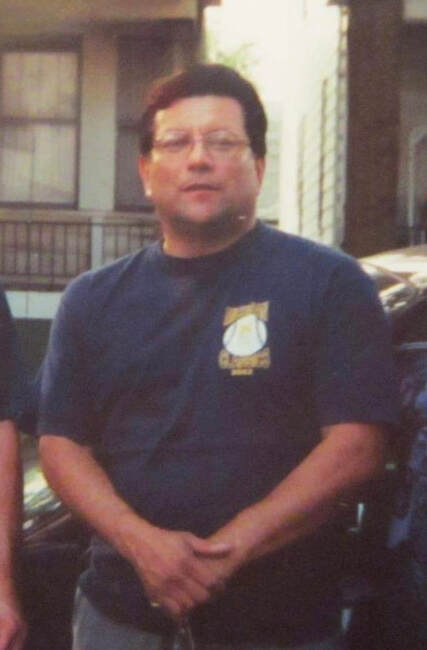
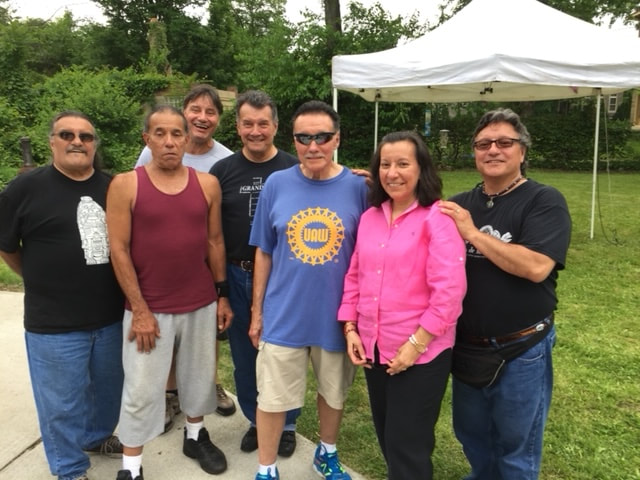
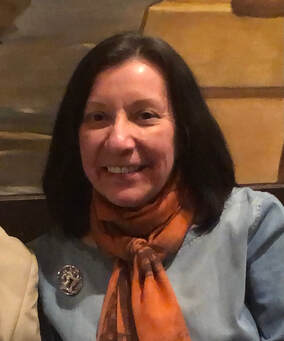
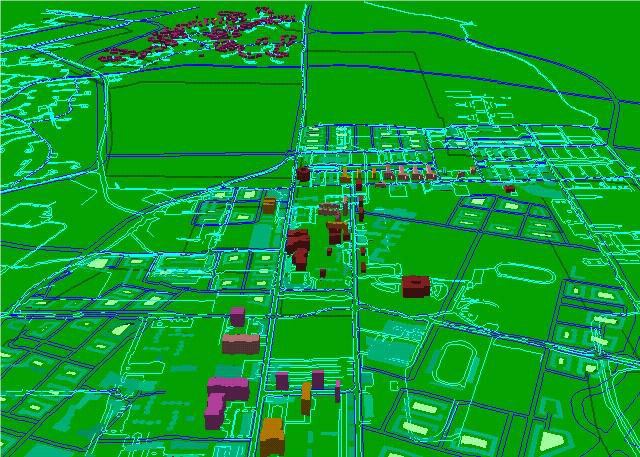
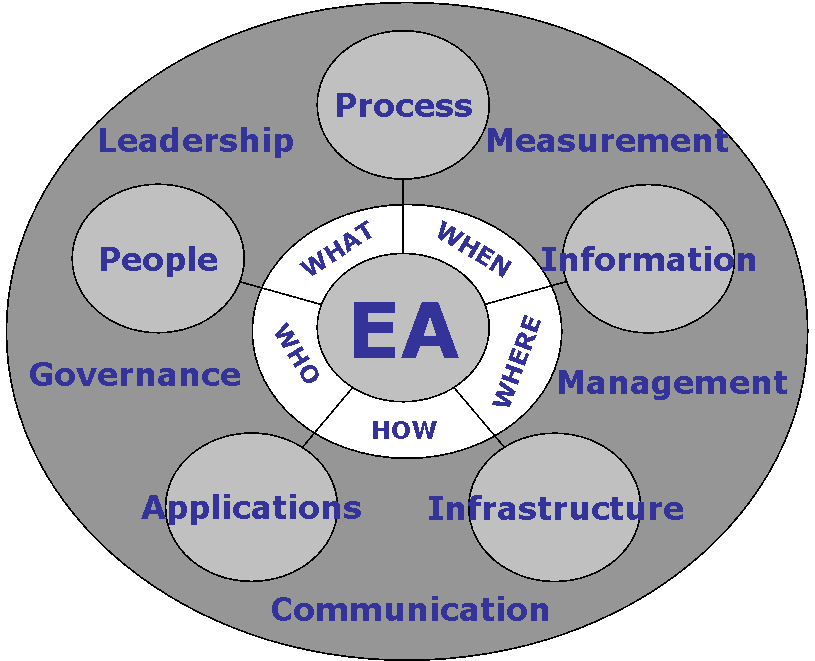
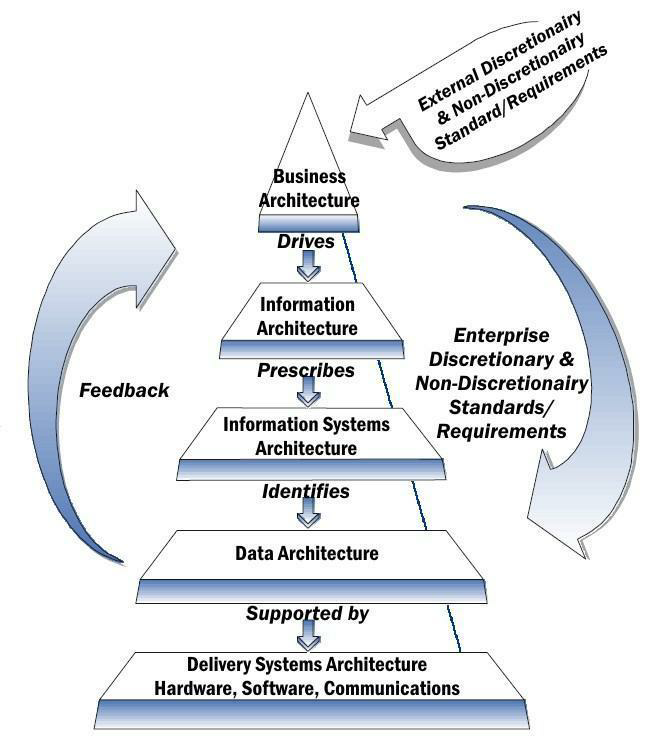
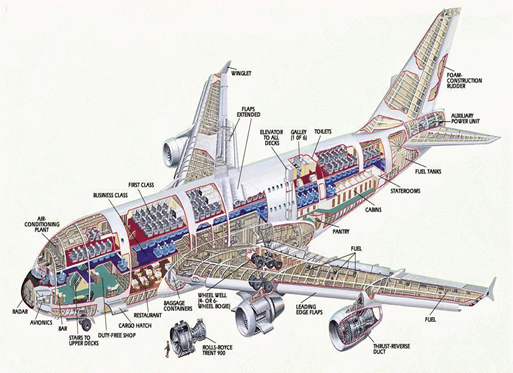
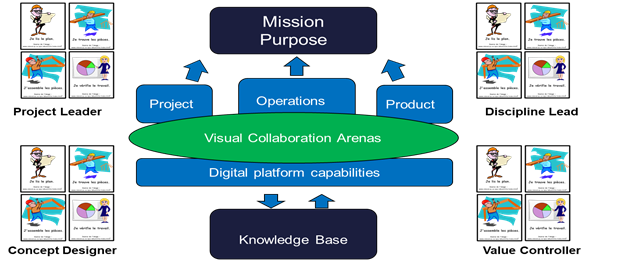
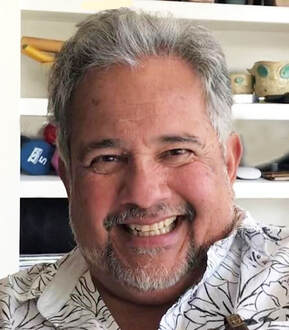

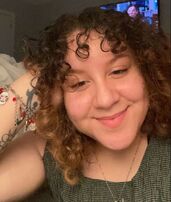

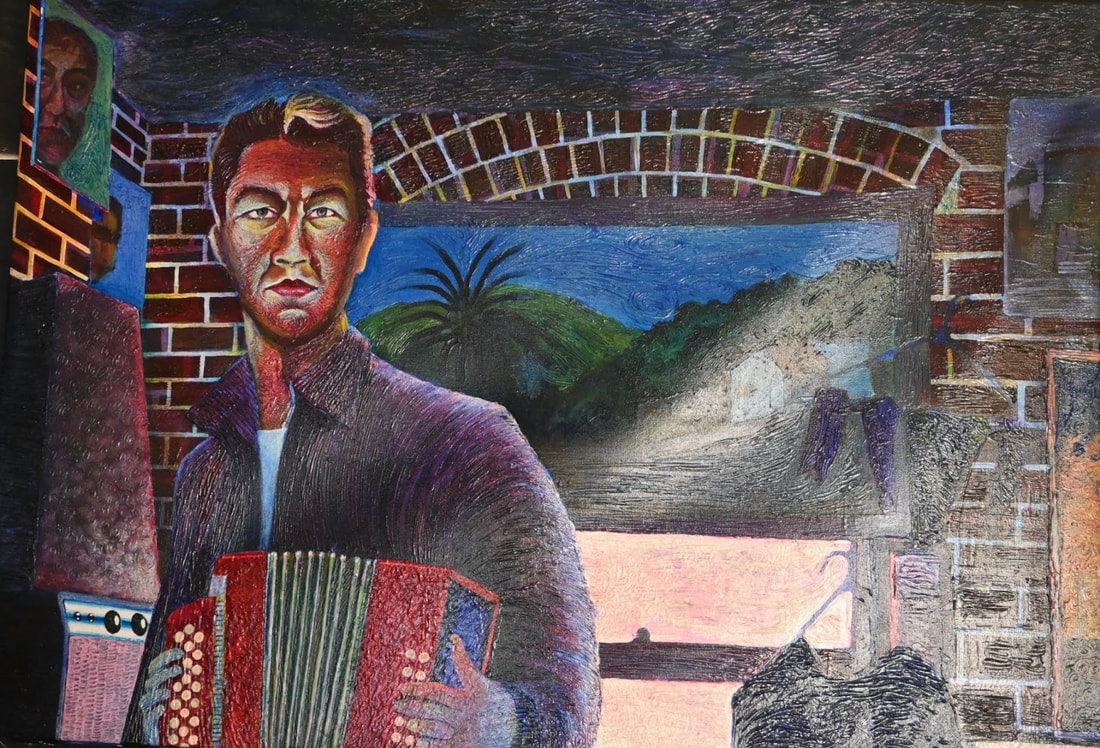
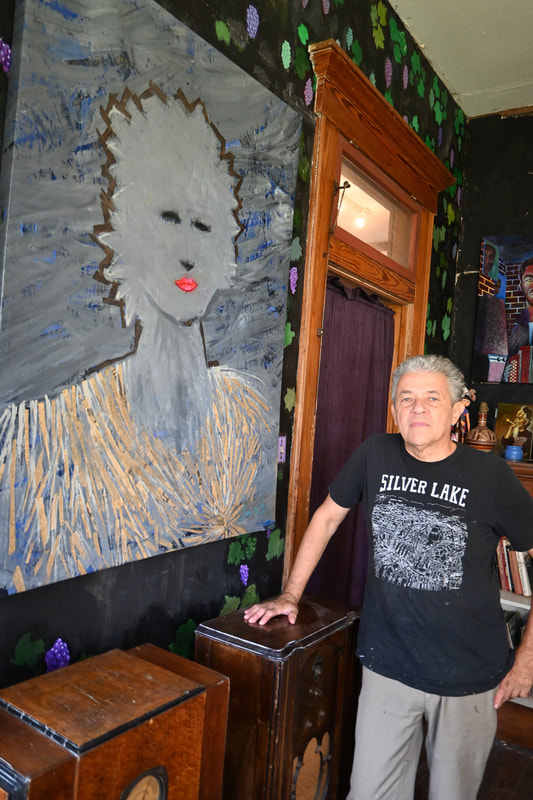


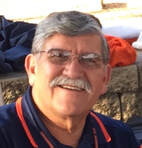

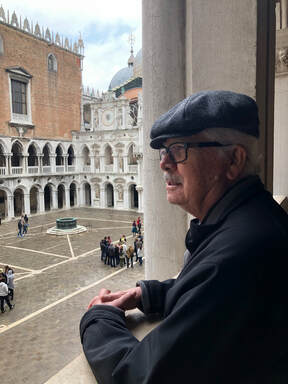
 RSS Feed
RSS Feed